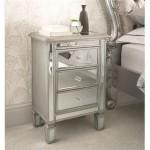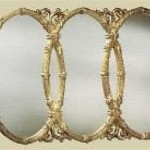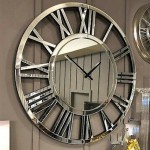Can You Put A New Frame On A Mirror? An Extensive Guide
Mirrors, beyond their functional purpose, often serve as decorative elements, contributing significantly to a room's aesthetic appeal. Over time, the existing frame of a mirror may become damaged, outdated, or simply no longer align with evolving design preferences. This frequently leads to the question: is it possible to replace the existing frame with a new one? The answer, in most cases, is yes. However, successfully reframing a mirror involves careful planning, appropriate tools, and a methodical approach. This article details the process, considerations, and potential challenges involved in putting a new frame on a mirror.
The decision to reframe a mirror is often driven by aesthetic or practical reasons. A frame might be chipped, scratched, or discolored, detracting from the mirror’s overall appearance. The existing frame may clash with a new color scheme or updated décor, necessitating a change to maintain visual harmony. Furthermore, some individuals simply prefer a different style of frame, whether it be a more modern, rustic, or ornate design. From a practical standpoint, a loose or damaged frame can compromise the structural integrity of the mirror, increasing the risk of breakage. Replacing the frame, therefore, can be a preventative measure.
Assessing the Existing Mirror and Frame
Before embarking on the reframing process, a thorough assessment of the existing mirror and frame is crucial. This involves carefully examining the existing frame's construction, how it is attached to the mirror, and the overall condition of the mirror itself. Identifying the type of adhesive or fastening method used to secure the frame is essential for determining the best removal technique. Common methods include glue, nails, staples, or a combination thereof. The condition of the mirror glass is also important. Cracks, chips, or delamination of the silvering on the back of the mirror can significantly complicate the reframing process and may even necessitate replacing the entire mirror rather than just the frame.
The size and shape of the mirror are also critical factors. Accurate measurements of the mirror's dimensions are necessary for selecting or constructing a new frame that fits properly. If the mirror has an irregular shape, creating a custom frame may be required. The weight of the mirror should also be considered, as the new frame must be strong enough to support it. Larger, heavier mirrors may require more robust framing materials and hanging hardware to ensure stability and prevent accidents.
Documenting the existing setup with photographs can be incredibly helpful. These photos can serve as a reference during the removal and reassembly process, particularly when dealing with complex frame designs or intricate attachment methods. Also, taking note of the existing hardware is essential. Are there D-rings, wire, or some other method of hanging the mirror currently in place? You will need to replicate it with your new frame or update your hardware.
Removing the Old Frame
Removing the old frame requires patience and care to avoid damaging the mirror. The specific technique will depend on the type of adhesive or fastening method used. If the frame is glued to the mirror, a heat gun or hairdryer can be used to soften the adhesive. Apply heat gradually and evenly, being careful not to overheat the glass, which could cause it to crack. While heating the adhesive, gently pry the frame away from the mirror using a thin, flexible tool such as a putty knife or scraper. Work slowly and methodically, applying gentle pressure to avoid chipping or breaking the mirror.
If the frame is attached with nails or staples, use pliers or a staple remover to carefully extract them. Avoid using excessive force, as this can damage the mirror's surface. If the nails or staples are deeply embedded, a nail set can be used to drive them further into the frame from the back, making them easier to remove. If the frame is held in place by clips or brackets, carefully detach them using a screwdriver or pliers. Be sure to keep track of all the hardware removed from the frame, as it may be needed for reassembly or for reference when selecting new hardware.
Once the frame has been fully detached, carefully clean the edges of the mirror to remove any residual adhesive or debris. Use a solvent such as mineral spirits or adhesive remover, following the manufacturer's instructions carefully. Ensure that the solvent is compatible with the mirror's backing and that it does not damage the silvering. After cleaning, thoroughly dry the mirror's edges with a soft, lint-free cloth.
Installing the New Frame
Installing the new frame involves carefully aligning it with the mirror and securing it in place. The choice of adhesive or fastening method will depend on the frame material, the mirror size and weight, and the desired level of permanence. For smaller mirrors, a strong adhesive such as construction adhesive or epoxy can be used. Apply the adhesive evenly to the back of the frame, following the manufacturer's instructions. Carefully align the frame with the mirror and press firmly to ensure good contact. Use clamps or weights to hold the frame in place while the adhesive cures, typically for 24 to 48 hours.
For larger, heavier mirrors, a combination of adhesive and mechanical fasteners, such as screws or brackets, may be necessary to provide additional support. Drill pilot holes through the frame and into the mirror's backing, being careful not to drill too deep and damage the glass. Use screws that are the appropriate length and diameter to securely fasten the frame to the mirror. Brackets can also be used to reinforce the frame, especially at the corners. Ensure that the brackets are securely attached to both the frame and the mirror's backing. It's important to note that drilling into the back of a mirror can be risky and might require professional assistance to avoid damage.
When choosing a new frame, consider the overall aesthetic of the room and the desired style. Frames are available in a wide range of materials, including wood, metal, plastic, and composite materials. Wood frames can be painted, stained, or left natural to complement the décor. Metal frames offer a sleek, modern look, while plastic frames are durable and water-resistant, making them suitable for bathrooms and other humid environments. After the new frame is securely attached, inspect the finished product for any gaps or imperfections. Fill any gaps with caulk or wood filler and touch up the paint or stain as needed.
Finally, consider the hanging hardware. Whether it is D-rings and wire, or some other method, make sure it's appropriate for the weight of the newly framed mirror and can be securely mounted to the wall. It’s always better to err on the side of caution when it comes to hanging heavy objects.

Diy Bathroom Mirror Frame For Under 10 O Hayley Blog

How To Build A Diy Frame Hang Over Bathroom Mirror Love Our Real Life

How To Build A Diy Frame Hang Over Bathroom Mirror Love Our Real Life

How To Frame A Mirror For Dramatic Upscale Look

How To Frame A Mirror

Upcycling That Old Mirror And Frame Into A New One

Diy Mirror Frame The Idea Room

Diy Mirror Frame Gold Dipped Pretty Providence

How To Frame A Builder Grade Bathroom Mirror At Home In The Wildwood

Iheart Organizing Diy Wood Framed Mirror








